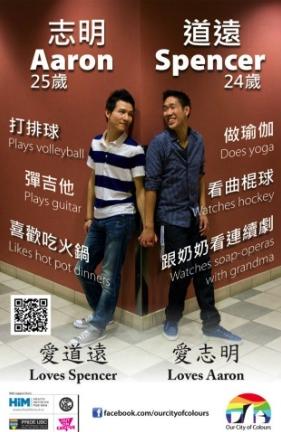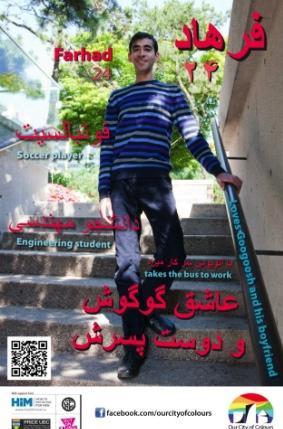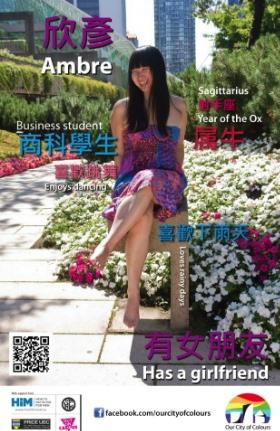A group of volunteers is hoping to foster a positive understanding of gay people in Greater Vancouver’s Chinese, Iranian and Punjabi communities with a new poster campaign titled Our City of Colours.
“Our primary goal was to reach out to other communities and cultural community groups,” says project founder Darren Ho.
“In addition to that goal we are also showing the LGBT community that it’s more than just one group that makes up the LGBT community,” he adds.
The group has already produced six posters featuring eight models from the Chinese, Iranian and Punjabi communities, with written descriptions of each model in English as well as their respective languages.
“There are so many cultural groups that we could have represented, but we chose these three due to their populations in Greater Vancouver,” says Ho. “Also, some of my team members come from the Chinese and Punjabi and Iranian communities, so we felt quite comfortable starting there.”
“In the future we want to cover the Korean, Filipino and Japanese communities as well,” he adds.
The idea for the campaign was conceived at last year’s Totally Outright, the Health Initiative for Men’s leadership course for young gay men. “We had to come up with a program or project that would somehow better the health of gay men,” Ho explains. “We were given an assignment for a theoretical project, but we decided to make it non-theoretical and actually do it.”
Ho hopes to raise awareness in communities that he says don’t get a lot of exposure to gay images or issues.
“Even though we know that there a lot of positive LGBT images in the media, if these kind of images are only in English, a lot of the population in Greater Vancouver are not going to get the messages that are out there,” he says.
Ho and the other volunteers, who are mostly students, spent the last seven months contemplating how best to introduce gay content to communities who may not be familiar with the issues. One of the challenges they faced, he says, was using languages that don’t have many, or any, positive words to describe gay people.
“In a lot of these languages gay issues are not talked about,” he says. “When we translated from English, they started as negative words but later became positive because we’ve reclaimed them.”
The posters reveal the models’ sexual orientation through phrases such as “has a girlfriend” or “interested in men” rather than using words such as “gay” or “lesbian.” Two of the posters depict same-sex couples posing affectionately with one another.
A recent incident on Davie St reminded Ho of why the campaign is necessary. While walking past a gas station with a South Asian friend, he says his friend overheard a South Asian cab driver tell another cab driver that “it’s disappointing to see people from our community on this street.”
“That in a lot of ways shows to us why we need to do this project,” he says. “We want to respond to those comments by showing people that we are from those communities as well and not just on Davie St.”
He also wants to remind everyone that not all gay people are Western and white. “This has to do with the whole concept of Western civilization dominating over other cultures,” Ho says. “My friend and I felt that when you are openly LGBT you are assumed to have forgotten your background and assimilated into Western culture.”



 Why you can trust Xtra
Why you can trust Xtra


